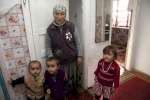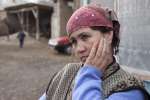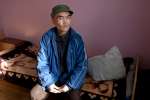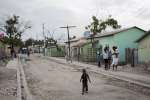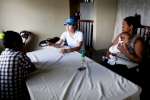- Text size
 |
|  |
|  |
| 
- Français
Statelessness: Former refugees win citizenship, and now dream of home ownership
News Stories, 15 September 2011
HO CHI MINH CITY, Viet Nam, September 15 (UNHCR) – When the coconut groves of this city's Thu Duc district became a refugee camp nearly 30 years ago, the area was so remote it was a five-hour commute from the centre – by rowboat.
Now called District Nine, today it's one of the most fashionable areas of the booming southern metropolis of Ho Chi Minh City (formerly Saigon), where wealthy business people build villas and fanciful walled castles, which they reach in less than an hour over bridges and wide highways.
Luxury property has always been out of the reach of Nguyen The Tai, who fled Cambodia and came here as a refugee when he was just 11, and has been stateless all his life. In fact, he never even dreamed of buying the small cinder-block row house built by UNHCR where he lives with his 75-year-old mother.
But his dreams expanded exponentially after he finally got Vietnamese citizenship last year, along with some 2,300 other former stateless Cambodians. Thanks to UNHCR's efforts, he now has a chance to buy his rented house from the local authorities at just two per cent of the market price.
"I would be very happy to be the owner of this house," the cheerful 46-year-old says, romping with his dog in his small garden. "In Vietnamese there is a proverb, 'settlement before career'."
Not that he's had much of a career either. Because he was stateless, Tai – he took the Vietnamese name when he got his citizenship – could only work as an unskilled labourer at perhaps half the going rate, despite being a skilled electrician. He could not get bonded, obtain an identity card, or legally marry his common-law wife of nine years.
His older sister, now called Le Ngoc Hai, has also paid a life-long price for their statelessness, lingering fall-out from the Pol Pot years in Cambodia. The family fled in 1975 after their father, a former Cambodian military officer, was attacked with an axe by Pol Pot's murderous Khmer Rouge. He died of his injuries after reaching Viet Nam.
Despite speaking fluent French, the closest Hai has come to using it professionally was while working as an underpaid cook for a Frenchman in Ho Chi Minh City for the last 15 years.
In the 1980s, as they saw thousands of other refugees resettled abroad, the family originally hoped they would get to join relatives in France. A change in policies shattered that dream, and by the mid-1990s, their focus shifted to trying to get citizenship in their adopted home, where they had learned the language and customs. But they were caught in a legal limbo, because Viet Nam required them to relinquish their Cambodian citizenship, and Cambodia had renounced them.
The aspirations of all the stateless refugees in this settlement plummeted. "I just had one simple hope: that when I died I could get a death certificate, to prove that I ever existed," said one of the family's neighbours in the row of modest townhouses built by UNHCR and later handed over to municipal authorities.
Hai, the mother of two teenagers, feels a tinge of sadness she had to wait 35 years to become a citizen, but she and her brother are still optimistic about the future.
"I am not very young, but I am not very old," the 51-year-old says, "so I can still hope my life can change because of my new nationality."
Her brother adds with a smile: "Physically I am strong, stronger than young people, so now I hope I can work in my real profession." And buy that house, of course.
By Kitty McKinsey
In District Nine, Ho Chi Minh City, Viet Nam













